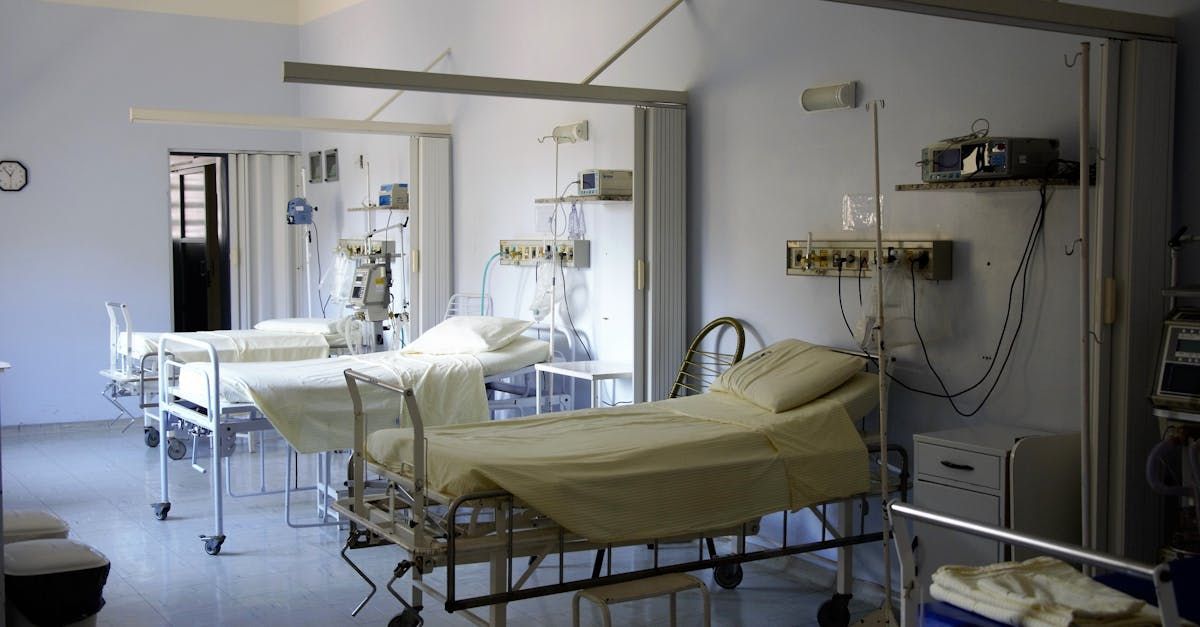
To build a successful healthcare facility, you need to focus on meticulous planning, compliance with regulations, and ensuring patient-centric design. This article will guide you through the essential steps and best practices for healthcare facility construction, based on real-life experiences and expert insights.
Key Takeaways
- Patient needs are paramount in healthcare facility design.
- Compliance with health codes and regulations is mandatory.
- Sustainable building practices can enhance operational efficiency.
- Technology integration is essential for modern healthcare services.
- Effective project management ensures timely and within-budget completion.
Understanding Healthcare Facility Construction
Healthcare facility construction is unique due to the specialized requirements of medical services. Unlike standard commercial buildings, healthcare facilities must accommodate complex systems, adhere to strict regulations, and prioritize patient safety and comfort.
Patient-Centric Design
The primary focus of healthcare facility construction is to create spaces that enhance patient care. This means designing rooms and facilities that are both functional and comforting. For instance, natural lighting, noise control, and easy accessibility are critical factors that improve patient well-being.
Compliance with Codes and Regulations
Healthcare facilities are subject to rigorous building codes and standards, which ensure safety and functionality. Adhering to these regulations is non-negotiable. Codes like the California Building Standards Code and OSHPD regulations dictate the structural integrity, fire safety, and accessibility standards for healthcare buildings.
The Importance of Sustainable Practices
Sustainability in healthcare construction isn't just about being eco-friendly. It also means creating efficient systems that reduce operational costs. Incorporating green building materials, energy-efficient HVAC systems, and water-saving fixtures can significantly impact the facility's long-term sustainability.
Technology Integration
Modern healthcare facilities must be equipped with the latest technology. This includes everything from advanced medical equipment to robust IT infrastructure for patient records management. Ensuring seamless integration of technology into the building's design is critical for operational efficiency.
Effective Project Management
Managing a healthcare construction project requires a delicate balance of budgeting, scheduling, and quality control. Experienced project managers constantly monitor progress to ensure the project stays on track. This involves working closely with architects, contractors, and healthcare providers to meet all project requirements.
Phases of Healthcare Facility Construction
Understanding the phases of construction helps streamline the process and anticipate challenges.
1. Planning and Budgeting
This initial phase involves identifying the needs of the facility, securing funding, and setting a realistic budget. Stakeholders must consider factors like location, size, and specific healthcare services to be offered.
2. Design Development
In this phase, architects and designers create detailed plans based on the project requirements. The design must incorporate patient flow, medical equipment, and safety regulations.
3. Pre-Construction
Pre-construction involves finalizing the design, obtaining necessary permits, and selecting a construction team. This phase is crucial for identifying potential issues and avoiding costly delays during construction.
4. Construction
The actual building process begins, with project managers overseeing every aspect to ensure adherence to the plan. Quality control measures are implemented to maintain high standards.
5. Post-Construction
Once construction is complete, the facility undergoes inspection to ensure it meets all regulatory standards. This phase also includes training staff on the new systems and scheduling a grand opening.
6. Operational Handover
The final phase involves handing over the facility to the healthcare provider. This includes a thorough walkthrough, final inspections, and ensuring all systems are operational.
Real-Life Experiences in Healthcare Construction
A Sustainable Hospital
One of our notable projects involved constructing a new wing for a hospital focusing on sustainability. By using recycled materials and installing solar panels, the facility achieved significant energy savings. The integration of natural lighting and green spaces also improved patient outcomes.
Challenges and Solutions
The project faced several challenges, including delays in material supply and unexpected design changes. Through effective communication and adaptability, we managed to keep the project on track and deliver a facility that met all expectations.
Key Components in Healthcare Facility Design
- Patient Rooms Comfort and accessibility
- Natural lighting, noise control, easy access
- Operating Rooms Sterility and functionality
- Advanced HVAC systems, sterile materials
- Waiting Areas Patient and family comfort
- Comfortable seating, entertainment options
- IT Infrastructure Efficient data management and security
- Robust network systems, data encryption
- Safety Systems Compliance with health and safety regulations
- Fire alarms, emergency exits, handrails
Project Management Best Practices
Clear Communication
Regular meetings and updates ensure all parties are on the same page. Clear communication helps address issues promptly and keep the project on track.
Detailed Scheduling
Creating a detailed schedule with milestones and deadlines helps monitor progress. This ensures timely completion and allows for adjustments if needed.
Budget Management
Keeping a close eye on the budget helps avoid overspending. Regular financial reviews and contingency plans are essential for financial control.
Integrating Advanced Technology
Smart Building Systems
Smart building systems, like automated lighting and climate control, enhance efficiency and reduce operational costs. These systems can be programmed to adjust settings based on occupancy and time of day.
Telemedicine Facilities
Incorporating telemedicine capabilities allows healthcare providers to offer remote consultations. This requires robust IT infrastructure and secure communication systems.
Benefits of Sustainable Healthcare Facilities
- Cost Savings Lower operational costs through efficient systems
- Reduced energy bills, water-saving fixtures
- Improved Patient Outcomes Enhanced patient comfort and well-being
- Natural lighting, green spaces
- Environmental Impact Reduced carbon footprint and resource consumption
- Use of recycled materials, solar panels
- Compliance Meeting or exceeding ecological regulations LEED certification, adherence to green building codes
Key Considerations for Healthcare Facility Construction
- Patient Needs: Prioritize patient comfort and accessibility.
- Regulatory Compliance: Adhere to all building codes and health regulations.
- Sustainability: Incorporate green building practices.
- Technology Integration: Ensure robust IT infrastructure and modern medical equipment.
- Project Management: Maintain clear communication, detailed scheduling, and budget control.
Future Trends in Healthcare Facility Construction
Modular Construction
Modular construction involves building sections of the facility off-site and assembling them on-site. This method can reduce construction time and costs while maintaining quality.
Virtual Design and Construction (VDC)
VDC uses 3D modeling and simulation to plan and manage construction projects. This technology allows for better visualization and coordination, reducing errors and improving efficiency.
Smart Healthcare Facilities
The future of healthcare construction lies in smart facilities equipped with advanced technology. These buildings will feature automated systems for lighting, climate control, and security, enhancing efficiency and patient experience.
Conclusion
Building a healthcare facility is a complex but rewarding endeavor. By focusing on patient-centric design, compliance with regulations, sustainability, and technology integration, you can create a facility that meets the needs of both patients and healthcare providers. Effective project management and clear communication are essential for ensuring the project's success.
With over 20 years of experience, Kendrick Construction is committed to delivering high-quality healthcare facilities that stand the test of time. Contact us today to learn more about our services and how we can help bring your vision to life.

